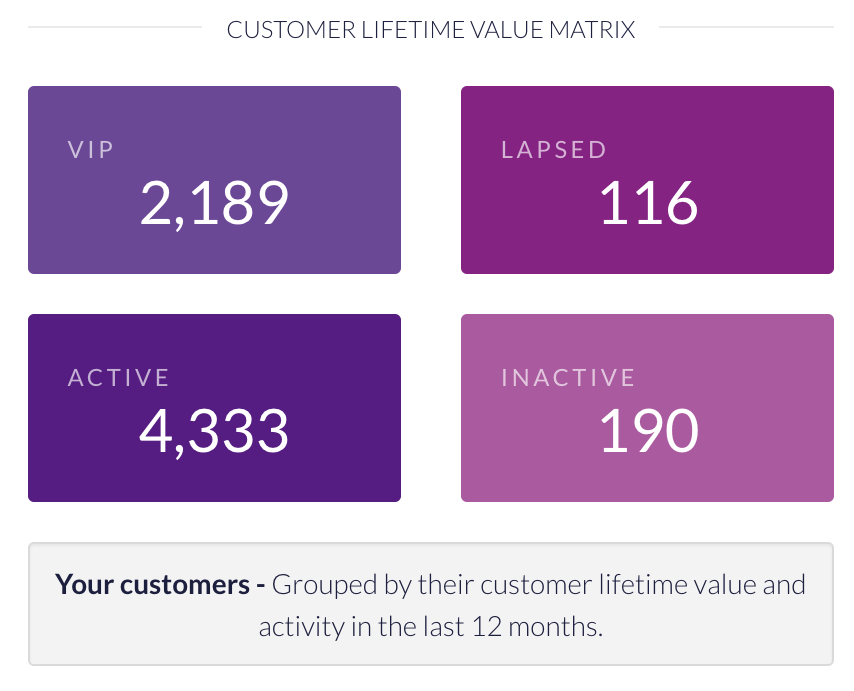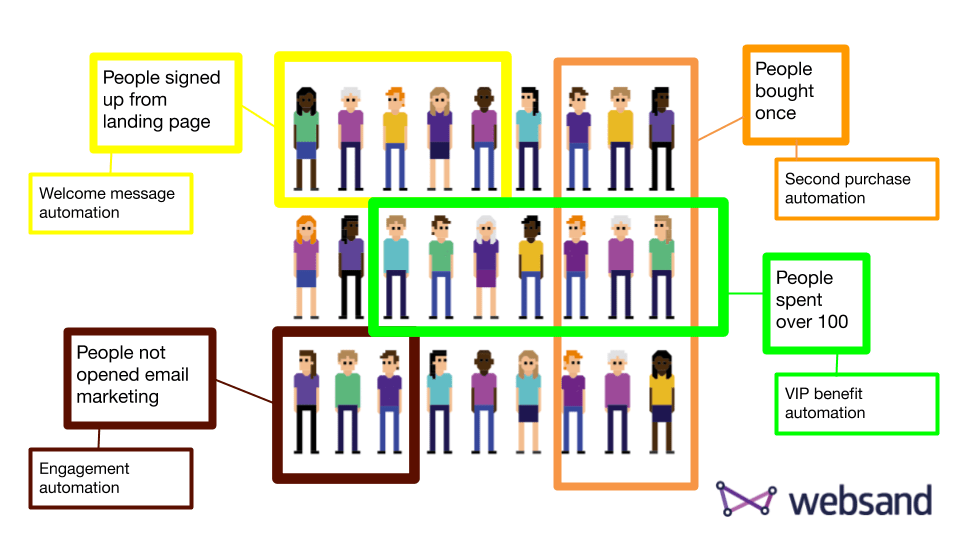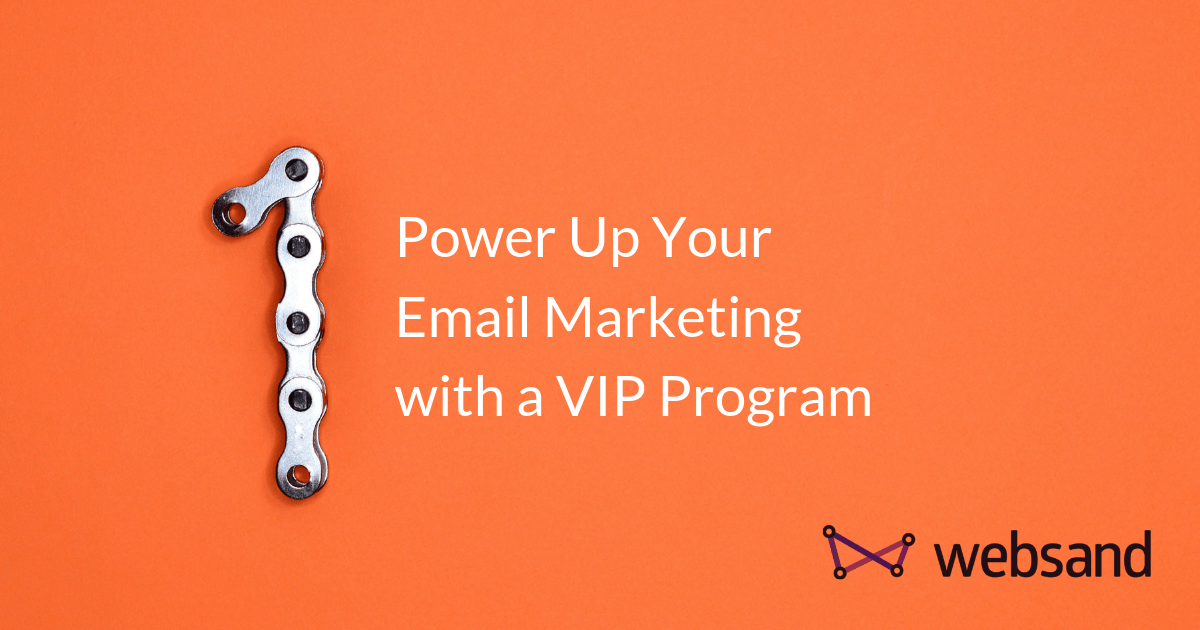How do I create a VIP program for my online store?
Everyone wants the best service and special treatment, be that offline or online, so how do you create a vip program for your e-commerce store?
In this post we explain how we help online businesses to identify their VIP’s and build data driven email marketing processes to keep those VIP’s engaged.
How do you describe a VIP
You’ll likely see an invitation to join a VIP list when you first land on an e-commerce website.
10% off your first purchase!
Get a sneak peek of our next launch – only for our VIP list!
5% off every order when you become a member!
Sure, they might persuade a lukewarm visitor to sign up. But can you really call these people VIPs?
You might make a few extra sales. But you won’t necessarily earn loyal customers. This common tactic doesn’t explore the full potential of VIPs.
Part of the problem is that it comes down to your subscribers’ stage of awareness. Diehard fans and loyal customers will join the VIP list and buy during a pre-launch period. But a new subscriber who hasn’t bought from you yet? They may join the VIP list out of curiosity. But they won’t always buy the product early. Why give them the same perks as a repeat customer?
To power up your email marketing, you need to create a VIP program based on their value as a customer. Reward them for their loyalty. And encourage other customers to become VIPs too.
How do you do that? Let’s walk you through the process.
How do you identify a VIP?
The starting point of any VIP program started with understanding who a VIP is for your business. To do this you need to know the value of your customers first.
Here at Websand, we divide your subscribers into four groups. They’re based on the average lifetime value of your customers. That’s your total amount of generated income divided by the total customer number.

Your first group is your VIP’s. They’ve spent money with you in the last year and they’ve spent more than the average lifetime value. Think of them as your hardcore fans, and ideal for your VIP program.
Next, we have the ‘lapsed’ group. These customers have spent more than the average lifetime value. But they haven’t been active in the last 12 months. They’re previous VIPs, so introducing a VIP program could be perfect to get them to buy from you again.
There’s the ‘active’ section. These customers spent money within the last twelve months, but less than the average lifetime value.
And finally, we have the ‘inactive’ section. They’ve spent less than the average lifetime value and they haven’t spent in the last year.
We do this for you since we designed our platform to handle data. Which leaves you free to get on with your marketing.
And your goal as a marketer is to generate more engagement and more revenue. Introducing a VIP program gives you a great tool to motivate behaviour from your customers. To encourage new subscribers to become customers and to encourage existing customers to spend again.
Get your VIP program correct and you’ll have have a regular process to encourage repeat spend from your audience.
Everything points back to the VIPs
As lapsed subscribers come back to life, the 80/20 rule kicks in.
Long-time fans of the Websand Way of Email Marketing already know what we mean.
But if you’re new, the 80/20 rule is based on the Pareto Principle. In email marketing, you’ll make 80% of your sales from 20% of your customers.
The more you get the VIPs to spend, the average lifetime value increases.
Why? The VIPs generate more income, but the customer number stays the same. You’re dividing a greater income by the same number of people.
The higher the average lifetime value becomes, the harder it is to become a VIP, and qualify for the benefits of your VIP program. As a result, customers must spend more than the average lifetime value to qualify.
You’ll need to work harder on encouraging the active customers to spend enough to become VIPs.
This is where a solid VIP program kicks in as an incentive. Research shows those in a loyalty program usually spend up to 18% more than your other customers.
And you can work on lapsed customers through your automation. Dig into your data to check when customers lapse. Is it 370 days after their purchase? 390?
This is when your retention and re-engagement marketing comes into effect.
Set up a email marketing automation sequence to reintroduce these customers to your brand and encourage them to spend again.

If your product is an item people only buy every couple of years? Work out what else you can offer as interim purchases to keep them in touch with your brand.
And set up a VIP program packed full of compelling benefits that would stop VIPs from lapsing in the first place.
How Can You Create a VIP Program?
VIPs already love your brand. That’s why they spend more than the average lifetime value with you. You need to get them to spend more money, which is easier because they’re less resistant to spending.
Clothing firm Banana Republic upgrades members of their branded credit card to Luxe status when they earn 5000 points. That gets them perks like free clothing alterations and shipping.
Lapsed customers loved your brand. That’s why they used to be VIPs. But they’ve become resistant to spending. You need to create a program that removes that resistance.
And active customers already like your brand enough to buy from you. They just need a nudge to spend more.
Health food and supplement store Holland & Barrett runs an effective points program. Points convert into discounts even on sale items.
To encourage all three groups, you need a solid reason to stimulate sales. Make it something they want. Some suggestions include:
- Early bird access to sales,
- A first look at new products,
- Extra entries in competitions you run,
- Promotional codes for perpetual discounts,
- Affiliate codes so they earn a percentage on every sale they encourage,
- Or even the chance to appear in your marketing.
Poll your existing VIPs and ask what they’d like. What you offer depends on what you sell and how often customers need to buy from you.
Whatever you choose, test it before you publish it
Go for the ‘surprise and delight’ method.
It’s better to under-promise and over-deliver. Otherwise, you might offer something that no one really wants.
It won’t encourage sales and it might fall flat.
But if you send a ‘surprise’ 20% discount code to share with friends and family?
You can test how it performs with no expectations. And it’s a nice perk for your customers. Put the code in their hands and follow what they do with it.
How far and wide do the codes go? Track how many people become customers and then become a VIP based on this first sale.
In this example, you’re testing an assumption that VIPs will become your advocates. You’re also testing the assumption they’ll bring in new advocates.
That’s why testing is your secret weapon in email marketing.
Think of tests as experiments and approach them with curiosity.
Then use the data to create a VIP program that works.
Remember what VIP stands for
VIP means Very Important Person. And these customers are very important. They keep your business going through their valuable custom.
And they’re your biggest brand ambassadors. They spread the good ‘word-of-mouth’ that’s impossible to buy.
So, treat them like the very important people they are. Reward their loyalty with genuine perks. Because believe us, they’ll boast about those to their friends, too.
We think you’re Very Important People too. And we’ve love to help you get your first VIP program off the ground. If you think it’s high time you had one, get in touch today.
We’re standing by!
It’s time to start getting more from your email marketing
Sign up for a free Websand demo and let’s show you how to get the best from your email marketing.
